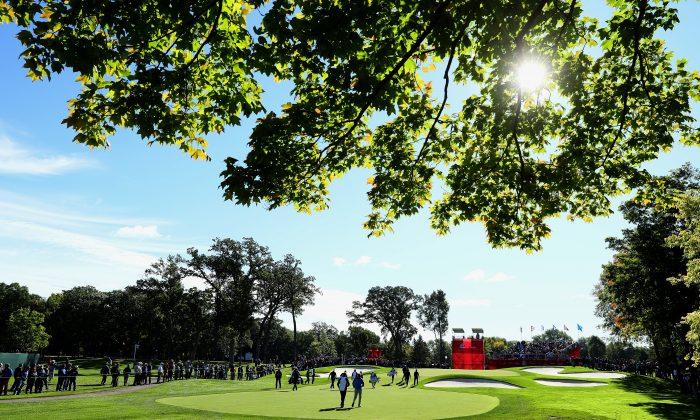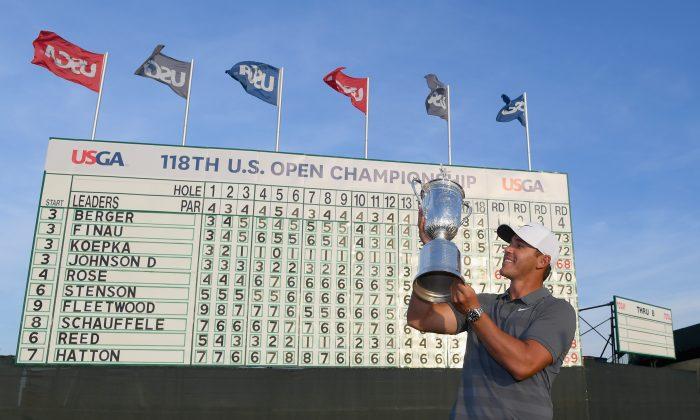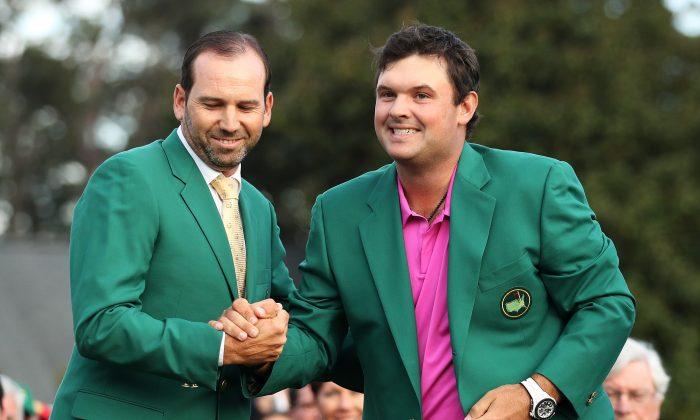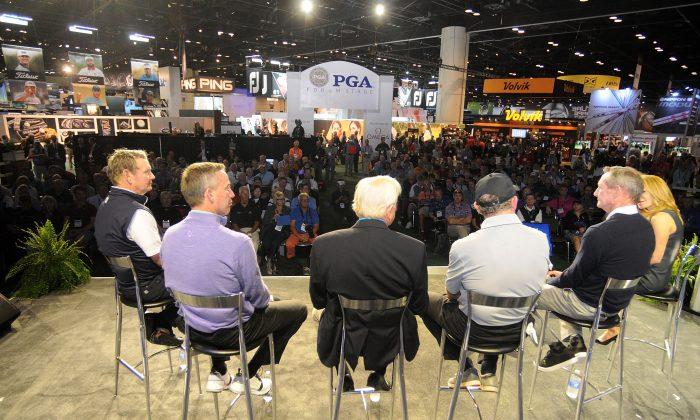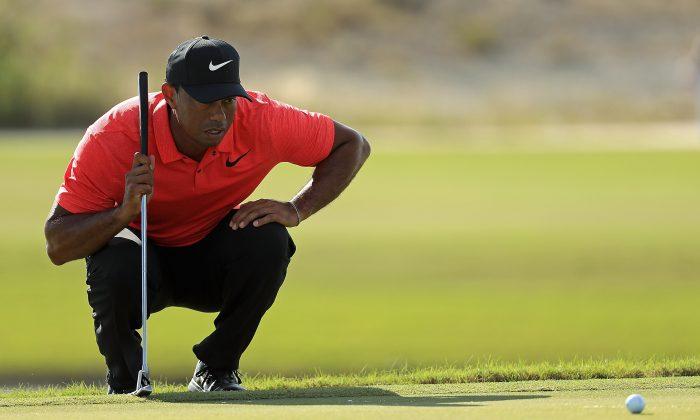CHASKA, MN—The bi-annual matches between Team USA and Europe is set to commence again this week. The Matches will be hosted by Hazeltine National Golf Club in Chaska, MN. The site has been host to numerous big time events -- including the 1970 and 1991 U.S. Opens and the ‘02 and ’09 PGA Championships. Four architects weigh in on the design elements of the course and what they believe will be crucial to this year’s event.
*****
MATT WARD: The American side will have control in setting up Hazeltine National for this year’s Ryder Cup Matches. If USA Captain Davis Love III asked for your recommendations, what counsel would you offer him?
GREG MARTIN: Wide fairways and long. I think the Euro’s have the advantage with creativity and recovery and I believe the US has an advantage with length.
KEVIN NORBY: My sense is that the American team might benefit by utilizing pin positions that are particularly difficult to read or offer some optical illusion. For instance, in 2010, when I helped oversee the reconstruction of the greens at Hazeltine, they expanded the back left of the 17th green and added a tricky pin position that many of these golfers will never have seen. The American team should be more familiar with these pin positions and might have additional time to familiarize themselves with the reads.
TOM MACKENZIE: Set up for maximum drama. Give the players options and choices. If that means avoiding some back tees then so be it.
JEFF BRAUER: I have always been a believe in the “they all play the same course” mentality. I have worked with a lot of tour pros, who have a “what if I hit it here?” mentality. but such a minute percentage of shots ends up in any one square foot of grass, so you can’t worry about it in detail. The only area all players are sure to see if the greens and the US squad hasn’t putted as well as the Euos in the last several matches. Maybe there is some potential there to select pins the US has had more time to practice for, but the Europeans will figure things out real quickly.

MW: Hazeltine National will play in a different order of holes for the Matches. Ostensibly, the main reason was to provide more frontage for corporate tents on the “new” closing holes rather than the limited space with the existing 16th and 17th holes if the main routing remained the same. As an architect, what’s your take on changing the order of holes?
JB: When the Senior Tour played on my Opryland Course - now Gaylord Springs - they re-numbered the holes for gallery control, even though it resulted in back to back par 3 holes on the back nine. It was disappointing, but there is nothing you can do when the powers that be make those kinds of decisions. I guess it could be used to strengthen an argument on a new design proposal for back to back holes with the same par. If it doesn’t matter to the pros, why should it matter to us?
TM: It’s a fact of life. We do design courses to be played in a specific order and to have a rhythm of easier and harder holes, downhill and uphill, doglegs and so on. Changing that rhythm is a bit like starting DarkSide of the Moon half way through the second side -- I am showing my age -- the songs are still brilliant but it just doesn’t seem quite right. If there was a chance that one of our courses could host the Ryder Cup but only if the hole order was changed you'd have to have a screw loose to say no.
KN: From purely the standpoint of maximizing spectator viewing and revenue, I understand the logic in rerouting the course. Hazeltine has a lot length and with the deep fairway bunkering and deep rough requires accuracy off the tee. I don’t particularly like the 16th hole because of the limited sight line to the green but it is one of the best risk/reward holes at Hazeltine. Assuming that the matches makes it all the way to the last two or three holes, having the 16th hole as one of the final holes would be ideal. The par-5 7th, which will play as the 16th hole, is also a good risk/reward so I don’t think it really matters too much.
GM: Holes are designed in an order for a reason, because is builds to a palpable tension, strategic density or aesthetic. That said, to give the mass of patrons better access, I have no issue with it.

MW: When you hear the term -- “good match play course” -- what does that mean to you?
GM: Everything. If it is a good “match play golf course” in all likelihood, everyone or anyone will enjoy it. Lots of variety and great shots are rewarded, mediocre shots have a chance of recovery and bad shots are punished. Pressure is evident. Strategic values and shot-making is vital and pressure, whether the weekend 4-ball or the Ryder Cup, is obvious.
TM: It means a course that is rich in strategic options where the more ambitious you are the greater the potential penalty is if you don’t pull it off and so too the reward for pulling it off.
KN: Are ones with a good number of risk/reward holes that allow the golfer to make decisions on whether to play aggressively or conservatively depending on is position in the match. Ideally, those risk/reward holes would occur throughout the routing or in the later holes. If the player is behind, he should have the opportunity to play the hole aggressively in an attempt to win the hole.
JB: Some suggest it’s a course with more swing holes than typical, as half par holes, two shot hazards, etc. I kind of look at it the other way around. The reachable par 4 and par 5 holes simply give the longer hitters the hole before they tee it up, so the outcome depends on pairings. Similarly, a water hazard ends the hole right there, when one player finds it. In my mind, keeping both teams in the hole longer makes it more interesting. If they hit a bunker, can they recover? That is more interesting than “He hit the water, he lost the hole.”

MW: If you had the power to select a course to host the Ryder Cup Matches for a site outside of Europe and the USA -- which one would you choose and why?
KN: I'd like to see a Ryder Cup held in Australia -- maybe Barnbougle Dunes or Kingston Heath.
TM: I haven’t been to Royal Melbourne but that’s where I‘d go because it plays so firm and fast. The Aussie’s are such passionate sports fans that you’d have a wonderful atmosphere full of passion, humor, and a little rowdiness. The Ryder Cup relies on that to work.
JB: Royal Melbourne, just because it’s a favorite course and it did well in the President’s Cup.
GM: Royal Melbourne, for the reasons cited above.

MW: If you had the power to select a course to host the Ryder Cup Matches for a facility in both the USA and Europe which has never hosted the event -- which ones would you choose respectively and why?
TM: Sadly I think the Cup in recent decades has been played on courses more tailored for the event than the strength of the course. I think I would take it to dramatic coastal venues which also provide visual drama to appeal to the non-golfing television watchers. Chambers Bay drew some criticism during the U.S. Open but it has a lot going for it. I am biased but Turnberry is a great venue for a Ryder Cup with all of its coastal drama. It’s been many moons ago since the matches was played on a links. The Trump factor would throw in a wildcats as well.
GM: Difficult question because hosting a major event requires so much more than the qualities cited above including viewing, pedestrian circulation, air and vehicular access is necessary. But, if those attributes were not important and the quality of the golf strategy was absolute: US: Pine Valley – purest shot values in the US. In Europe: Ballybunion -- fell in love the first time.
JB: My gut reaction is National Golf Links or Pine Valley in the US. Maybe Myopia Hunt. Just one of those really old traditional courses rather than newer ones. Won’t happen, because there is little place for corporate tents. For the Euro venue -- I recommend for nostalgia and architecture to go back to the first British course to hold it -- Moortown Golf Club in Yorkshire -- an early Alister Mackenzie design.
KN: In the USA, I'd love to see a Ryder Cup at Old MacDonald at Bandon Dunes. The course has great variety -- an abundance of strategic and risk/reward holes and a unique architectural story. In Europe, I think it would be great to see the Europeans at Royal St. Georges in England. Again, the a variety of strategic holes would make for a number of interesting matches.

MW: You can make one specific change to the Ryder Cup Match -- what would you change?
KN: I'd like to see more pairings and more matches.
JB: As a spectator, it’s really hard to watch when only 4 matches are going on. Even on Sunday, with a dozen matches, it’s tough. I remember Brookline, somehow as we walked in the front gate, right behind No. 1 green, a spot opened up right on the ropes. We saw all but one group go through, and then doubled back to the back nine to see them each play one hole again, before retiring to the corporate tent to watch the finale. No proposals to fix it, though.
GM: Every golfer must play at least once per day.
TM: Make it mixed. Boom. That would reflect normal golf played week in week out at clubs around the world.

MW: Name the player for each side you believe will be the most valuable for their respective side?
JB: The one who sinks the most putts -- obviously.
GM: For the US -- Jimmy Walker. For the Euro side -- Justin Rose. Each is steady off the tee with a solid iron game.
KN: The Europeans have got Sergio Garcia, Martin Kaymer, Rory McIlroy and Lee Westwood who all have outstanding Ryder Cup winning records. Surprisingly however, the Europeans have six golfers who have never played in a Ryder Cup. If the Europeans are going to win, young first timers like Thomas Pieters and Matthew Fitzpatrick are going to need to win some matches. On the other side, with the exception of Bruce Koepka, most of the American players have Ryder Cup experience. Captain’s pick Ricky Fowler, who has a dismal losing Ryder Cup record -- will have to play well this time around if the American’s are going to defeat the Europeans.
TM: Dustin Johnson for the US because he is so strong in all departments except maybe his head. I'd be happy for him to be my four-ball partner any day. For Europe, Justin Rose and Henrik Stenson. Justin has blossomed after his Olympic victory and looks more like a leader suddenly. I just hope Henrik can stay hot.

MW: The winner of the 2016 Ryder Cup will be who and what will be the predicted final tally?
JB: My uncreative pick is Europe, continuing the trend. The US already has some tension in the way Love left Bubba off the team with the first set of picks, supposedly due to some players not liking him. That can’t bode well for the team spirit.
GM: US falls behind, but grinds to win late. US: 14 ½ Euro: 13 ½
KN: In a close one -- the Americans by a margin of 15-13.
TM: I think it will be a narrow win for the US by a point. Let’s face it we need the USA to win again just to keep it interesting!
THE CONTRIBUTORS:

Tom Mackenzie, partner with Mackenzie & Ebert and has worked on many of Europe’s classic courses and has recently just completed the overhaul of The Ailsa Course at Turnberry. Tom is the current President of the European Institute of Golf Course Architects. The firm is based in the United Kingdom.

Kevin Norby, ASGCA, RLA, is a member of the American Society of Golf Course Architects (ASGCA) and principal of Herfort Norby Golf Course Architects in Chaska, Minnesota. Involved with more than 100 golf course projects in the United States, Canada, and Caribbean. In 2010, Kevin was responsible for overseeing the reconstruction of the greens and the regrassing the fairways at Hazeltine National in preparation for the Ryder Cup. The firm is based in Chaska, MN.

Jeffrey D. Brauer is an Arlington, TX-based golf course architect, where he started his firm -- Jeffrey D. Brauer / GolfScapes, Inc., in 1984 after a seven-year apprenticeship with Killian and Nugent near Chicago. A past president of the ASGCA, he’s designed over 50 courses and renovated many more. Courses of note include the Quarry and Legend at Giant’s Ridge, The Wilderness at Fortune Bay -- both in Minnesota -- and the top three public courses in Kansas -- Firekeeper, Colbert Hills and Sand Creek Station.

Greg Martin, President, Martin Design Partnership, Ltd. Has been practicing golf course architecture since 1985 with services to private clubs, the public sector and residential golf course communities. Working from Chicago and throughout the Midwest as well from southwest Missouri to Northern Wisconsin. Member ASGCA since 2006 and serves now as President. Major works includes Rich Harvest Links, Sugar Grove, IL -- named Best New Private by Golf Digest and most recent renovation Oak Meadows in Addison, IL.
M. James Ward, a member of Golf Writer’s Association of America (GWAA) and past member of Met Golf Writer’s Association (MGWA), has reported on golf’s grandest events since 1980 in a variety of forums.
